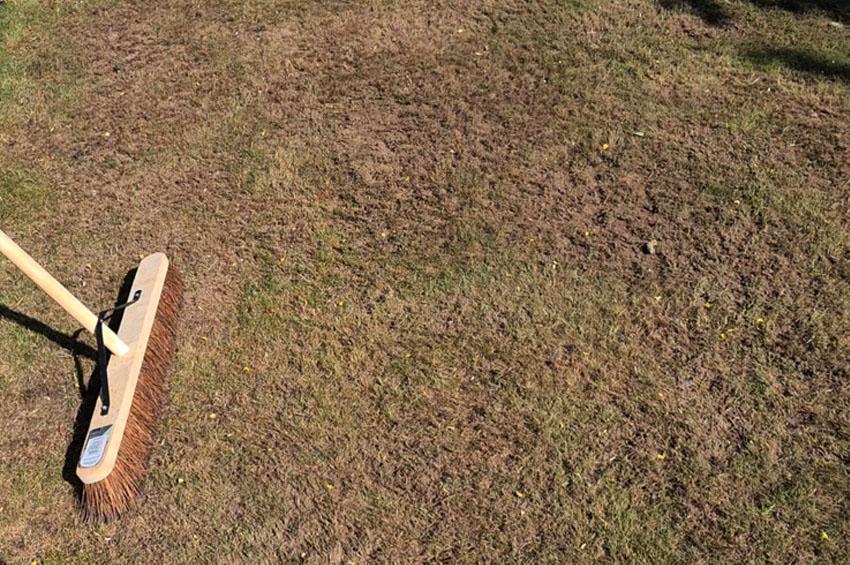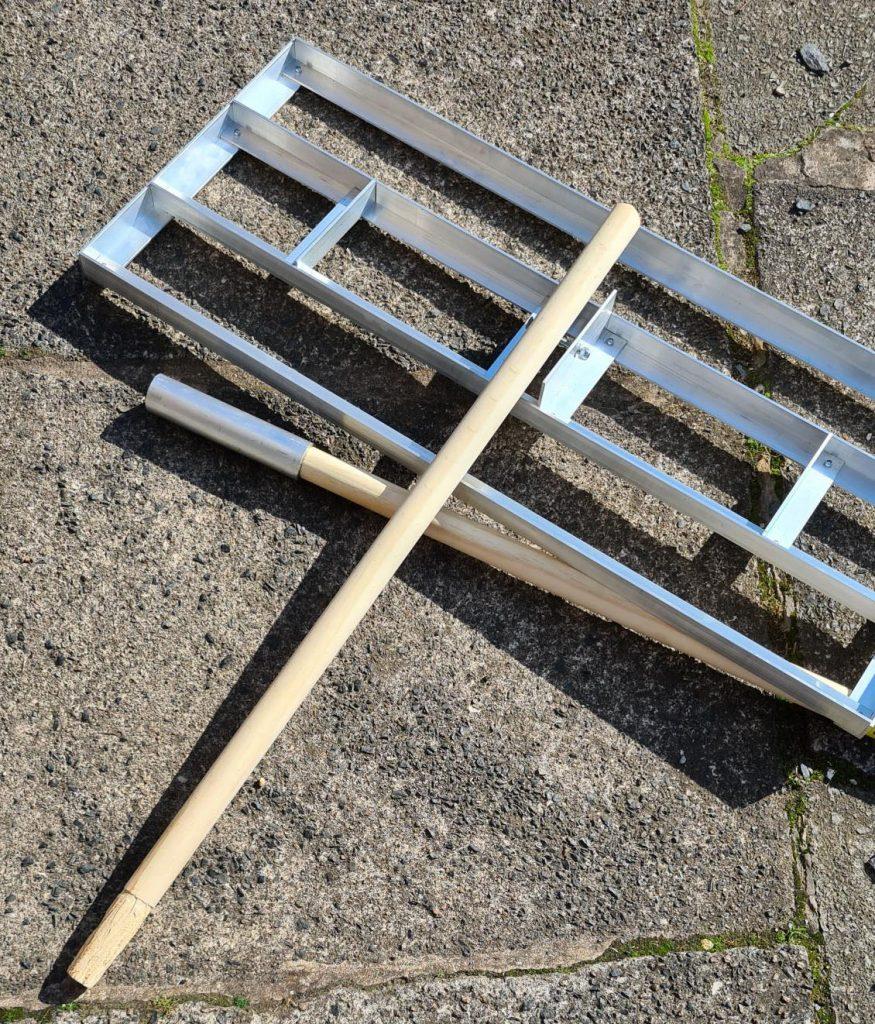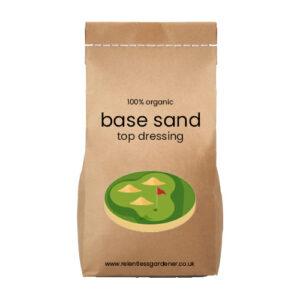
Created By
Matt Adams
Updated On
- March 1, 2024
Get FREE Exclusive Access
Keep your lawn pristine with exclusive tips, offers and insights that I only share with my private subscribers.
Latest Posts
How to level a bumpy lawn using a compost, topsoil or sand mix
- By Matt Adams
- March 1, 2024
Jump to
Get FREE Exclusive Access
Keep your lawn pristine with exclusive tips, offers and insights that I only share with my private subscribers.
When I first sowed my grass seed for my new lawn – I’ll be honest – the soil wasn’t the flattest. That meant once the new grass had germinated, although it looked sooooo good, there were quite a few underlying bumps underfoot. Of course they were invisible to the naked eye but having spent days and weeks getting the lawn area sorted it was pretty annoying to me personally.
Oh and we also have a bit of a challenge against the squirrels digging, causing the lawn to become uneven too.
That’s why I’m writing this post. To help you take the right steps so you can overseed, then level your lawn and make it easy to walk on or even for the family to play games on.
The first step though, is to work out what’s causing your lawn to be uneven.
Note: Whenever you apply a dressing to your lawn you should feed & overseed beforehand so the lawn thickens itself up afterwards.
lawn levelling products
-
- Out of Stock
100% Organic Base Sand for Levelling & Dressing Lawns
- £0.31 - £1.10 / per m2
- Read more
-
Why is your lawn not level?
There are many reasons why your lawn might not be level. And it could be that depressions (or low spots) appear over time but were once level. And understanding this root cause will help avoid changes in the future.
For example, it could be caused by drainage issues or even broken water pipes under the ground. If you feel this is the case, you should definitely investigate further – but I can’t tell you how to do that.
It could be that you’ve inherited a lawn that is completely uneven because the previous owners weren’t that fussed about the lawn itself.
If you recently created your own lawn, whether by using grass seed or turf, it could be caused by the ground settling itself into place. Especially if you rotovated the ground soil before starting.
First question…
How uneven is your lawn?
How uneven your lawn is will determine how much work is needed to get it level. For example, your lawn might be on a slight decline or incline and you want to level that. If so, there are a couple of options (keep reading).
On the other hand, you may have tiny bumps and holes, which you’re trying to flatten out. You still have a couple of options but it shouldn’t cost you as much in either time or effort.
Let’s start with how to level a patch which has a slope (if you know what I mean)
How to level a sloping lawn
If you want to make the whole area, on which your grass sits, even, then you will either need to:
- Add a sand and topsoil mix to bring the low ground level across the area
- Shift some of the soil from the high point of the land to the low point of the land to even out what you already have. I did this myself, but that was when I was starting my lawn from scratch.
Here’s how to do either one..
Levelling a sloped lawn by adding a topsoil mix to the low points
Just to let you know, this is the most costly option. The first thing you’ll need to do is edge off the area where you want the borders to be. A full explanation on edging ideas is outside the scope of this article but you could use wooden planks, metal, plastic or even rubber edging specifically designed for the job.
Whichever material you choose, you’ll want to run the border around the outside making sure the lowest part of the area is level with the highest part of the area.
Once that’s done, you now have your levelled area to fill with topsoil.
So, what’s the best and most cost-effective top soil mix to fill this area?
There are 3 options here – Peat-free Compost, top soil, or sand/soil mix 70/30.
Here’s what I recommend:
Start by filling the area over the top of the old grass with peat-free compost until it is approximately 1/2 inch from the top of the edging border, then use top soil to fill it to the top.
If possible, you’ll want to run a long piece of wood along the top to get it as perfectly level as possible.
You’ll also need to tread down the compost and top soil with each layer so that it’s compact and doesn’t drop down after the seed has grown.
once you’ve filled the area, you can overseed the it with a grass seed from our collection and also apply a pre seed fertiliser should you wish to help it grow quicker and survive for longer.
Levelling the lawn with soil from the top of the slope (by hand)
This is the least costly option but will require much more physical work on your behalf. It’s something I did myself to one of my lawns and it paid off in dividends. But, I promise you! I felt like I was shifting soil for a whole week.
And my partner was even calling me the TOP DIGGER, ha.
Anyway, tis method involves moving soil from the highest part of the area to the lowest. Of course, you’re going to start from scratch again when choosing this way of levelling because you can’t move the soil without wrecking the top grass.
Depending on how sloped the area is, you may even consider taking the grass from the highest section, turning it upside down and laying it on the lowest section. Then covering the area with top soil (choosing one of the dressing mix options above).
Alternatively, you can hire a ‘doss cutter’ (doss meaning the very top of the turf), which will skim the top off, leaving you with a good amount of soil left for shifting to anywhere way you like.
Now you need to get your spade out! Or depending on the size of area your covering, you may want to hire a digger. It will set you back a couple of hundred quid though.
Use your spade or digger to move soil from highest point to the lowest point. Be sure to keep raking it flat as possible as you move the dirt around. That way it will be easier to level at the end.
Even if you do this, you still need to add a layer of top soil, again choosing from one of the options below.
You’re now ready to sow your grass seed.
Be sure to come back and read the next section though. Because once your lawn has established itself, you may need to go over it for even more precise levelling. It just depends on how much of a perfectionist you are. Remember though full on levelling is going to take time and probably a few seasons worth of additional sand or soil applications.
Levelling a bumpy lawn lawn with sand, topsoil or compost
If you have an established lawn and you simply want to get rid of some bumps and troughs. Simply follow the steps below and you can’t go wrong.
Whichever dressing mis you’re choosing to use, the process is largely the same for each. One of the main things to think about is which tools you will use for the job.
So, first I’ll give you the steps to take and then we’ll touch on some of the tool options for achieving the best results.
Step 1: Mow the grass extra low
Step 2: Apply pre-seed/turf fertiliser at a rate of 30g per m2
Step 3: Overseed the area using the correct type of grass seed mix for your usage and garden type.
Step 4: Section off your lawn into squares of approximately 6m2 (don’t worry about walking on the seed at this point)
Step 5: Apply a dressing of either topsoil, sand/soil mix 70/30 or compost at 2kg or 4kg per m2 (depending on budget and uneveness). That will be 12kg to 24kg per section of lawn.
Step 6: Spread the dressing using a tool of your choice (more on the tool options below)
Step 7: This step is optional – Roll over the lawn with a roller (or in my case a squeaky metal roller)
Tools for levelling a bumpy lawn
Tools can range from very expensive and professionally made to inexpensive home-made options. So, let’s go through the options.
Tool: Professional Compost & Topsoil Roller
This does exactly what it says on the tin (no pun intended). It rolls compost or top soil into the lawn as a thin layer, making it much easier to screed it and brush it.
It’s not cheap though! One of these will set you back around £200. Meaning it could be worth looking around for a second hand one instead.
What’s more, even if you have a roller like this, you still need to level the lawn with a leveller or a brush. Bringing me on to the next tool options – keep reading.
Tool: A Lawn Leveller

A lawn leveller is another cool tool that’s been specifically manufactured for the lawn care professionals. It’s basically made up of flat metal rods which rub agains the lawn, operated using the long connected handle.
This is a great way for getting your mixture right into the troughs without creating too many bumps in the meantime.
A lawn leveller costs between £80 and £150. However, I managed to pick mine up for £50 off eBay and was very happy with the construction.
Tool: A Stiff Brush or Broom
This is a super cheap way of spreading your levelling mixture. In fact you probably already have a stiff brush and if you don’t, you’ll find they’re really cheap at almost any hardware store.
You must make sure the bristles are stiff though because if you buy a soft broom the bristles will just go over the mix and it won’t spread properly.
Tool: A ‘home-adapted’ pallet
Maybe you’ve been doing some work in the garden and the products you bought arrived on a pallet? Well, now’s the time to make use of it.
One option for spreading the top dressing mix is by using a pallet with a couple of strings attached to it. Then, you pull the pallet across the lawn to level out the top soil mix.
I tried this when creating a lawn from scratch and I found it really helped. However, if you’re going to be caring for your lawn long-term, then I would recommend at least investing in a lawn leveller. Especially if you can find one a ta reduced cost.


This Post Has 9 Comments
Do you have to add topsoil to the sand on site or can you buy it pre mixed? Also, what would the maximum depth be that could be filled? Thanks
Sure, you can buy it pre mixed here Top Dressing For Overseeding (70/30 Sand/Soil). You can fill as deep as you like but if you’re seeding too, try not to smother the seed with it.
Hi Matt , trying to find out what the best sand to use in addition to compost and topsoil to level out my bumpy lawn.Any advice wot be greatly apply.Thanks
Justin
Hi Justin, this is the best sand to use because it’s washed and coarser than normal sand. 100% Organic Base Sand for Levelling & Dressing Lawns
When is the best time of the year to level out bumps and dips? Early-ish Autumn?
Thanks
Hi Nick,
Technically you can do it any time of year, but Spring and Autumn usually provide the best weather for grass seed to germinate. Cheers, Matt
Because edging is used to contain or separate design elements, you need to consider what it will be up against. For example, if the edging separates a flower bed from your yard, then the edging will need to stand up to weed eaters and mowers. Choose your materials accordingly!
the above makes a simple job very hard, sharp sand , a plank with rope, a rake is all you need. feed it a bit if u like
Hi Seb,
Yes that’s similar to how I explain ‘levelling a bumpy lawn with sand’. Just you’re using a plank and rope (nice suggestion) instead of a lawn leveller or a broom (the cheap option). Lawn Feed is definitely useful too ????